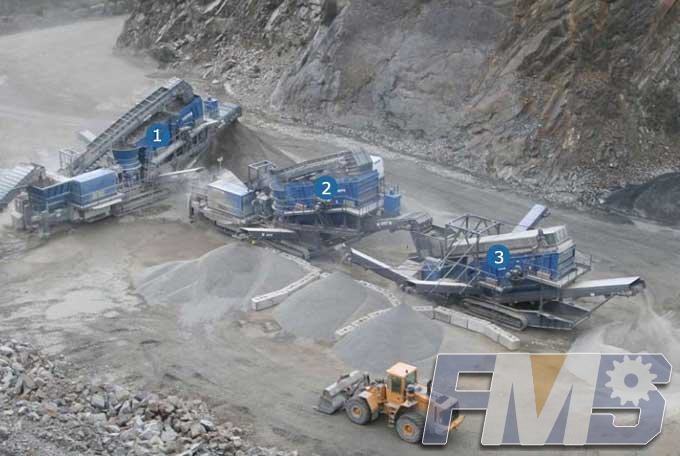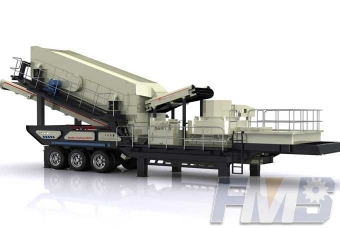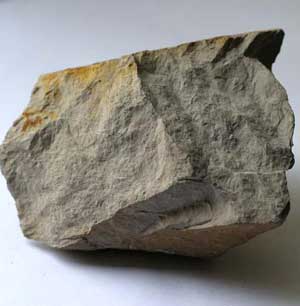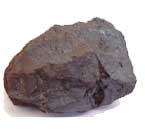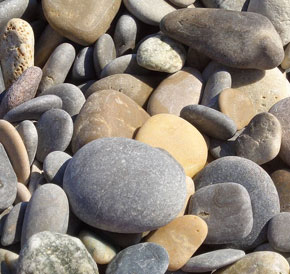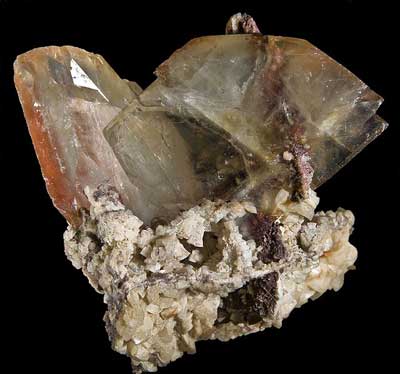THE MANUFACTURERS AND THEIR DESIGNS OF HPGRs
Polysius, KHD, and Köppern are widely represented globally, but the machines are man- ufactured exclusively at their respective facilities in Germany.
Polysius favours a high-aspect-ratio design—large diameter, small width—while KHD and Köppern prefer a low-aspect ratio. The high-aspect-ratio design is inherently more expensive but also offers an intrinsically longer wear life for a given application, as the operating gap is larger and the roll surfaces are exposed to a correspondingly smaller proportion of the material processed. The high-aspect-ratio design also produces a coarser product due to the greater influence of the edge effect; however, this difference is relatively slight, particularly with larger units. Nevertheless, for closed-circuit applications,this additional coarseness does increase the circulating load and tends to offset the wear life benefits, as a higher total throughput is required for the same net product.
The use of tungsten carbide studs to create an autogenous wear layer on the roll sur- face is covered by a patent held by KHD, from whom this technology is available under license.
Both Polysius and KHD have experience with minerals applications and studded roll technology, and are able to supply machines with capacities of up to about 2,200 t/h. Although Köppern has limited minerals experience, their HPGRs are successfully operat- ing in the cement industry. For highly abrasive materials, Köppern recommends HPGRs fitted with their Hexadur wear protection.
The Hexadur surface comprises hexagonal tiles of a proprietary abrasion-resistant material set into a softer matrix, which wears preferentially in operation, allowing the formation of an autogenous wear protection layer at the tile joints. The tiles and matrix material are fully bonded together and to the substrate in a high-temperature, high-pressure furnace. By contrast, KHD’s studs are inserted into drilled holes. As a result, the tiles are inherently stronger and more resistant to breakage due to oversize ore or tramp metal.
Köppern supplies patterned and profiled surfaces in both segment and tyre format, whereas Hexadur is generally available only in tyre format due to the dimensional control difficulties inherent in the fabrication and furnace treatment of segments. However, research into the commercial production of Hexadur segments is ongoing.
Meanwhile, the maximum Hexadur roll diameter available currently (and for the foreseeable future) is 1.5 m, constrained by furnace dimensions. This constraint limits Köppern’s unit capacity to about 1,000 t/h for hard-rock comminution applications using Hexadur. However, Köppern also offers machines with studded roll surfaces supplied by KHD, effectively lifting this capacity constraint.
Köppern has an established design in which the ends of the mainframe hinge out- wards to allow the roll assemblies to be removed without disturbing the feed system and superstructure. This allows roll change-out times for tyre replacement of about the same duration as for in-situ segment change-out. Polysius also offers a design that allows rapid roll assembly removal, but without the need for a hinged frame design. In more recent developments, KHD has unveiled a rapid change-out concept to be offered on new machines and which can be retrofitted to existing units, and Köppern has introduced their “C-frame” design that allows the removal of both roll assemblies from one end of the frame, so offering a maintenance advantage over their earlier design.
KHD uses cylindrical roller bearings that allow the choice of grease or circulating oil lubrication systems, as there is no relative movement between the bearings and seals. Polysius and Köppern use grease-lubricated, self-aligning spherical roller bearings.
Tagged: THE MANUFACTURERS OF HPGRs
Get Detail Information:
(If you do not want to contact to our online customer service, please fill out the following form, Our client manager will contact you later. We will strictly protect your privacy.)


